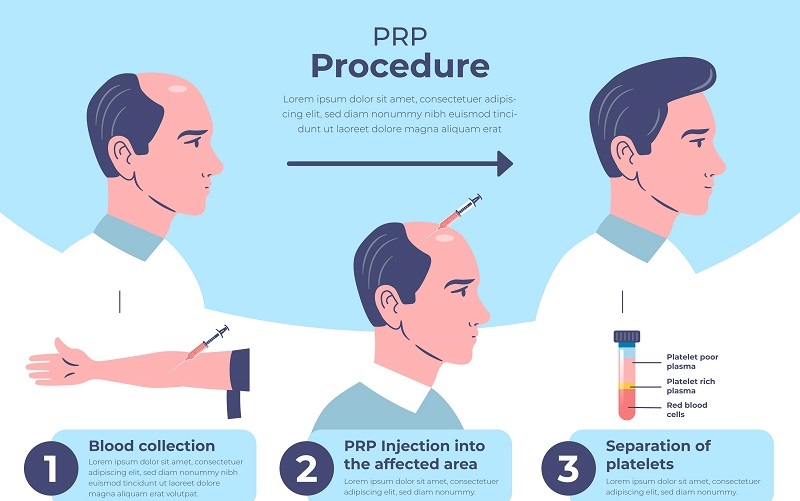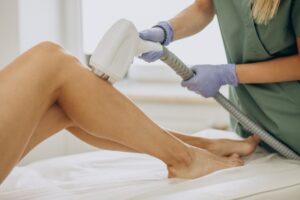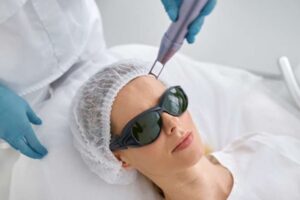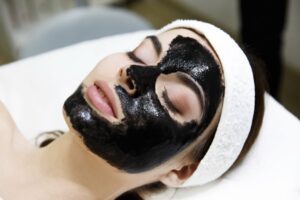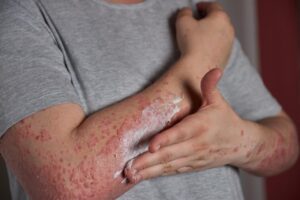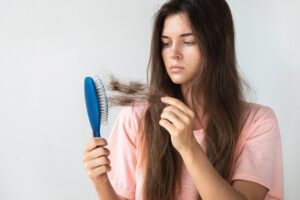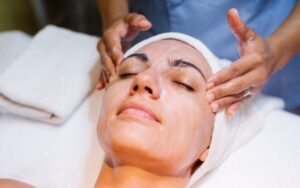-0001.jpg/:/cr=t:0%25,l:0%25,w:100%25,h:100%25/rs=w:1280)
PRP (Platelet Rich Plasma) for Hair Loss is now the latest trend in hair restoration and hair loss treatment. PRP therapy for men’s and women’s hair loss is becoming more and more common and is proving to be effective in correcting hair loss when done correctly.
Even though PRP therapy has been around since the 1980’s, doctors only started using it recently as a treatment for certain types of alopecia. Many user experiences have noted good results and the popularity of the procedure is growing rapidly.
-0001.jpg/:/cr=t:16.43%25,l:53.49%25,w:40.98%25,h:40.98%25/rs=w:1280)
PRP for hair loss is a non-surgical procedure that utilizes the stem cells and growth factors from the patient’s own blood to trigger the growth of hair from resting or miniaturized hair follicles. The first step involves drawing the patient’s blood into a specialized tube that is then spun down in a centrifuge for 15-20 minutes.
The centrifuge will separate the platelets from the rest of the blood. The final product is plasma that has been separated from the white and red blood cells. This plasma is then set aside and gravity allows the platelets to drop out of suspension and collect at the bottom of the tube.
This denser area of platelets in the plasma is called Platelet Rich Plasma or PRP. This area will typically have 3 -5 times the concentration of platelets and is the key ingredient to success in any PRP procedure. The platelet-poor plasma or PPP is usually collected from the top of the tube and discarded; or, in some cases saved for micro-needling treatment.
The platelet-rich plasma then is injected back into the scalp using one of two procedures:
- Subdermal: PRP is injected into the subcutaneous fat layer of the scalp using a longer needle with fewer injections; or,
- Dermal: PRP is injected into the scalp into the dermal layer using a shorter needle and a higher number of injections.
This therapy is mostly used as a growth stimulant hair growth procedure and typically requires multiple procedures over a course of 3-6 months to begin to show results. There are many methods of delivering PRP to the scalp. Such as subdermal and dermal injections, topical application after micro-needling or both. It is important to discuss what type of procedure your dermatologist suggests.
Why PRP Has Shown Results for Hair Loss Treatment
Platelet-rich plasma has approximately five times the number of platelets found in ordinary blood. These platelets have:
- Platelet-derived growth factor
- Transforming growth factor
- Insulin-like growth factor 1
- Vascular endothelial growth factor
- Keratinocyte growth factor
All the above have a positive impact on the growth of hair. Platelets stimulate the healing of wounds and cellular repair and when placed inside the scalp it seems to be able to repair areas of hair loss.
Results
PRP is not a permanent fix. Additionally, androgenetic alopecia is caused by the hormone, DHT (dihydrotestosterone) and PRP do not do anything to mitigate the effects of this hormone. DHT Blockers and additional hair loss products may still need to be used for an optimal long term result.
Despite some limitations, PRP injections have shown a positive therapeutic effect on both male and female hair loss without major side effects. The potential for using this therapy to boost hair loss thickness and density as a standalone treatment or after a hair transplant is good.
Following are a few results we got with PRP.



Safety of PRP
PRP for hair loss and the scalp is considered very safe because:
- PRP therapy is immunologically neutral and has no danger of allergies, hypersensitivity or foreign-body reactions.
- PRP is a sterile technique that has to be used at each stage of PRP preparation and application.
- PRP has a very short period of inflammation at the sites of wounds thus reducing any possible injection.
On its own, PRP is also used in hair restoration that produces great results. Using thin needles, a patient’s own PRP is injected into the scalp. The growth factors within the blood cells then go to work and trigger the growth of hair. This therapy is also suitable for both men and women. The end result of this therapy is fuller and healthier looking hair.
At times, PRP may be uncomfortable and painful so topical anaesthetics are often used. There is virtually no downtime following a procedure and you should be able to be back to work the next day will no noticeable trace of the PRP injections.

